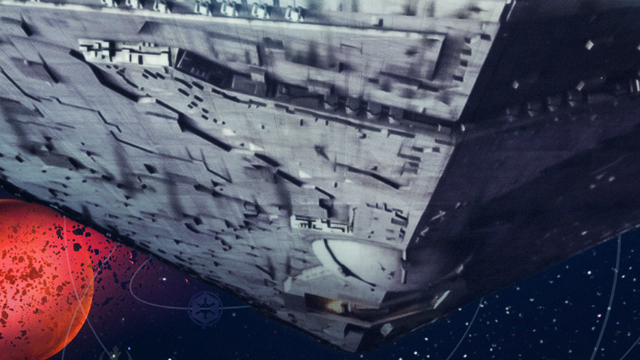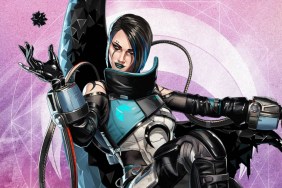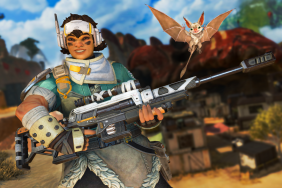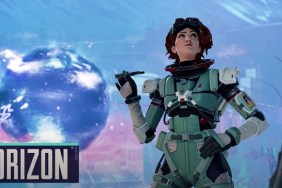When I was young, I had a bad habit of buying games blindly. In the days before Amazon was king, you usually just had to grab whatever you could find in stores. I didn’t have a high-end computer, so that made finding titles for PC even harder than usual. More than once I made the mistake of grabbing something like Giants: Citizen Kabuto that my meager computer couldn’t hope to run. However, I did end up discovering a lot of games that way that I might not have played otherwise. One of them was Star Wars: Rebellion.
Star Wars: Rebellion (Star Wars: Supremacy in the UK and Ireland) went against the grain of what was popular upon its release in 1998. When it came to real-time strategy, StarCraft and Age of Empires were the rulers of the roost, and favored quick, decisive unit movements and a tactical mindset. Star Wars: Rebellion is almost the exact opposite of those two games. It was developed by a studio called Coolhand Interactive, which is a bit of a mystery. As far as I can tell, the only game Coolhand Interactive ever made was Star Wars: Rebellion, and there’s no real history of the company to be found readily on the internet.
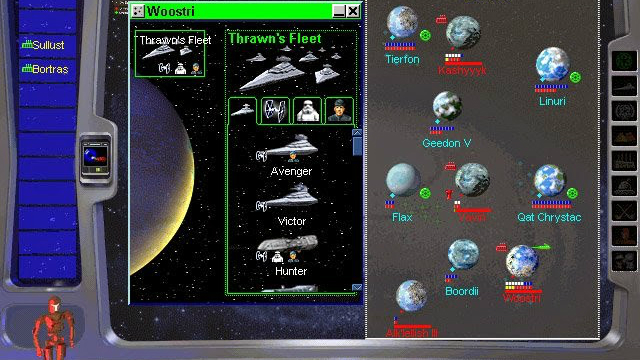
Although it’s an RTS, Star Wars: Rebellion’s interface reminds me more of a 4X turn-based strategy title. Instead of a battlefield view, you’re presented with a map of the Star Wars galaxy which you could customize to hold either 10, 15, or 20 sectors. Each sector contains some planets which in turn hold mines, refineries, and factories. Each world has its own diplomatic rating which can be influenced both by the diplomatic leanings of other planets in the system and diplomats from either the Empire or the Rebel Alliance.
Both the Empire and Rebellion always start with a few major characters. If you’re playing as the Empire, you’ll have Darth Vader and the Emperor. If you choose to be the Rebel Alliance, you’ll start with Mon Mothma, Luke Skywalker, Han Solo, and Leia Organa. With your named characters you can take on missions like diplomacy and recruitment (which gives you another named character if successful). You can also train troops that can be used to garrison or take over planets and build starships to wage war and blockade systems.
One of the most interesting facets of the game is the interactions between the named characters. Though you won’t get dialog or cutscenes when events occur to you or your enemy’s characters, there’s a lot of exciting tactics you can use with them. You can plan assassination, kidnapping or sabotage missions (though these can be done with less success using specialized troopers), spy on your enemy, and if your character is force sensitive, you can train during special events in-game.
Despite how much I like Star Wars: Rebellion though, it does have its flaws. Ground battles end up being a matter of who has more troops in the end, and they auto-resolve so there’s no strategic element. You can view starship battles, but the selection of orders you can choose are very limited.

The objective of the game is to capture the opposing side’s headquarters (Coruscant for the Empire and a mobile HQ for the Alliance), and kidnap either Darth Vader and Palpatine or Luke Skywalker and Mon Mothma (there is also an option to limit the objective to just capturing the opposing HQ). A double-edged sword is that many elements of the game are randomized when you begin. So while two games will never be the same, there’s no option to make the galactic map reflect the real Star Wars universe.
Star Wars: Rebellion is available on Steam and GOG, and it works just fine on modern PCs. There are also some mods available that help with balancing, improve the AI, and swap the hideous (even for 1998) ship models out for some better-looking ones. Because it’s mostly menus and text, the game has aged reasonably well graphically, and the gameplay still holds a unique allure that you can’t find anywhere else. If you like real-time strategy and Star Wars (especially if you were a fan of Empire at War) this game is definitely worth keeping in mind.
